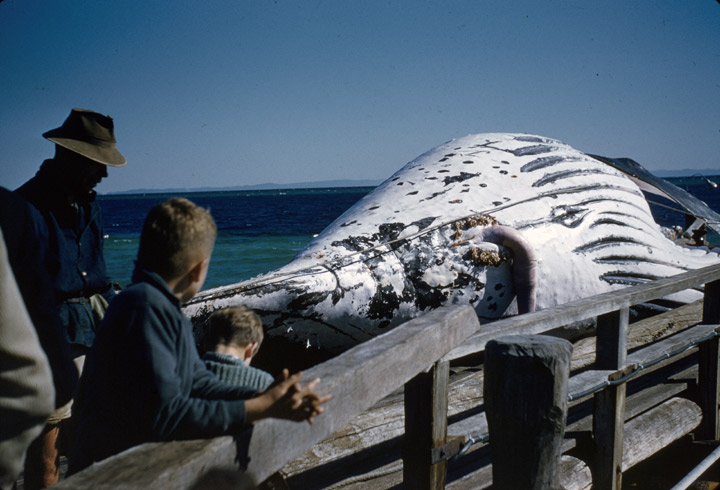 Humpback whale carcass, Tangalooma Whaling Station, c1957 - item 1 of 2
Humpback whale carcass, Tangalooma Whaling Station, c1957 - item 1 of 2
TLF ID R8170
This is a colour photograph showing the carcass of a southern humpback whale ('Megaptera novaengliae') on the wooden slipway of the Tangalooma Whaling Station on Moreton Island in Queensland. The whale is intact with its underside uppermost, showing distinctive colourings and markings, including the ventral grooves. Onlookers, including two young boys and a man who may be a station worker, observe the whale from a short distance. A wide expanse of water is in the background with a strip of land visible across the horizon.
